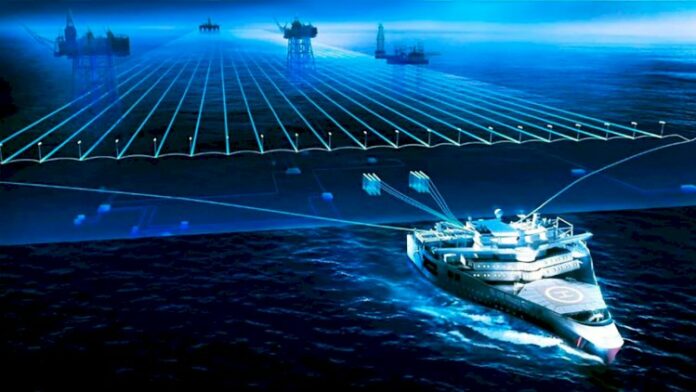In October the Norwegian engineering magazine, Teknisk Ukeblad, wrote an article about PGS’ technical developments on alternatives to airguns.
Without compromising on quality and efficiency, electrical marine vibrator sources and the eSeismic acquisition and processing method both have the potential to significantly reduce environmental impact compared to the conventional use of airguns. PGS’ ingenious solution for a marine vibrator has held up reliably in testing so far and will soon be used to generate its first seismic data. A larger geophysical test will require a commercial partner.
GeoStreamer, launched by PGS in 2007, was a groundbreaking advance in seismic acquisition sensor technology. Now, PGS is working on a new breakthrough that may revolutionize seismic sources.
PGS’ technical solutions can make seismic surveys more environmentally friendly while improving data quality at the same time.
PGS’ marine vibrator Section Manager Øystein Trætten to Teknisk Ukeblad says:
“For us, operational efficiency and the best possible data quality always have central focu.”
The advantage of using marine vibrators over airguns is the ability to limit audio signals to only the frequency range necessary for seismic. The source is all-electric, demands less energy, and there is no need to operate large air compressors. But the challenge industry has faced is designing the vibrator with sufficient size and capacity to produce enough sound pressure without shaking itself apart. PGS has an ingenious solution based on a modular system using stacked plates. This has superseded other configurations to take primary place in PGS’ marine vibrator development initiatives.
The key difference PGS’ vibrator has to other designs is that the densely stacked plates significantly increase the total surface area while minimizing the overall unit size. PGS has produced sufficient sound pressure level at the crucial lower end of the frequency band at operational depth. Accurate control of system resonance is defined so that the structural load of the vibrator is secure. So far the design has proved itself robust and reliable during both a 1 000 hour tank test, and at full power at depths of 60 m in a harbor. The next step is to perform a geophysical test on top of PGS MultiClient data for comparison.
The eSeismic method can be used with either marine vibrator technology or with standard air source elements to provide a quieter environment for fish and sea mammals. While the standard method uses a simultaneous array of 30 air source elements, eSeismic uses only one. It releases an alternation of 40, 90, and 150 cubic inches several times a second to generate a continuous wavefield. Sound exposure and peak sound pressure levels are significantly reduced compared to standard methods which releases 4 130 cubic inches of compressed air every 10 seconds.
PGS’ eSeismic project leader, Jostein Lima, told Teknisk Ukeblad that:
“eSeismic provides a quieter environment for fish and sea mammals, which is the primary environmental benefit of this method. Looking ahead, we’re working to increase the efficiency of seismic acquisition by mapping larger areas over fewer days, without compromising on seismic quality”.
A recent field trial offshore Brazil showed significantly lower sound pressure levels than traditionally produced by air source elements using the standard method. Its viability in assessing deep geological layers was successfully proven and eSeismic commercialization work is ongoing. PGS is planning to acquire more eSeismic data in 2020.
The development of eSeismic technology has been supported by the Research Council through the Demo2000 program in collaboration with Equinor.



